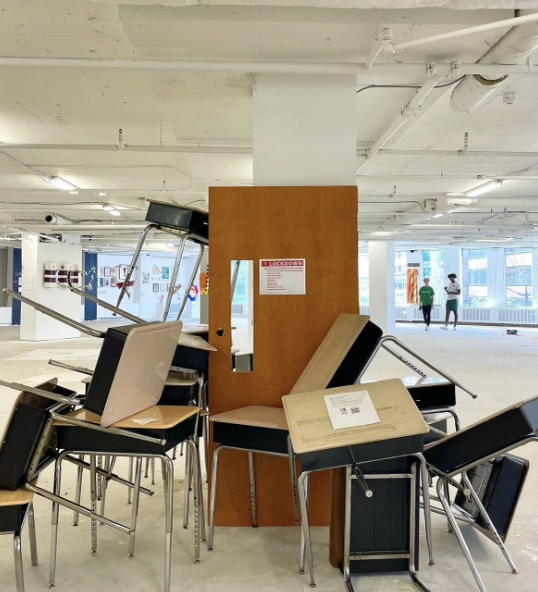The biggest obstacle standing in the way of Felix Baumgartner’s record-smashing, 24-mile Red Bull Stratos skydive on October 14, 2012, was also the one thing keeping him alive: his suit. “It was like breathing through a pillow,” the 44-year-old Austrian told an audience at the National Air and Space Museum Tuesday. His claustrophobia inside the pressurized suit got so bad that he fled to an airport in 2010 before he was supposed to take an endurance test, and flew back to Austria. “That was probably the worst moment of my life,” he said. “I was always trying to find my limit, and at that moment, I found it.”
With the help of a psychiatrist he eventually triumphed, and the suit he wore when he broke the sound barrier goes on display Wednesday at the Smithsonian museum, alongside the balloon gondola that carried him above the earth. A panel including Baumgartner, Colonel Joe Kittinger (Baumgartner’s capsule communicator and the previous world-record holder for freefalling), and technical project director Art Thompson discussed the genesis of the project and its future legacy both for military servicemen and for civilians as commercial spaceflight becomes a reality.
Baumgartner’s parachute was the first parachute designed for supersonic freefall, and although his suit was a standard S1034 pressurized space suit, it had to be reconfigured at the hip and arm sockets to allow Baumgartner the posture he required for the jump. His mentor was Kittinger, now 85, who had previously managed a jump from 100,000 feet above the earth in 1960 without a pressurized cabin, meaning he was exposed to temperatures of -94 degrees Fahrenheit—“pretty cold for a redneck,” Kittinger said.
Unlike Kittinger, who only had 33 parachute jumps under his belt when he took his record-breaking jump, Baumgartner had thousands. But the Austrian daredevil initially struggled when it came to convincing his technical crew he was serious. “We had no respect from these guys, because we were an energy-drink company and a base jumper,” he said. “I don’t think in the beginning they really believed in what we wanted to do.”
Ultimately, though, the jump became entirely a team effort; Baumgartner described Kittinger’s voice in his ear on the way up as the thing that helped him the most. “We had his life in our hands, and we knew it,” said Kittinger. Baumgartner described how from the minute he opened the cabin door, he knew he was 50 percent less safe, thanks to his interior environment now being as dangerous as the environment outside it. “I took a last look at the beauty of the earth,” he said. “I could see the curve of the earth, and I looked up at the black sky, which was completely different from normal sky, and I took a jump into the unknown.”
After the panel discussion, the audience asked questions, including what Baumgartner did the night before he jumped. He laughed, then looked uncomfortable. “Are there kids in the audience?” he asked, before describing how he knew there was no way he was going to get any sleep. He was also asked what his thoughts were as he made the jump. “I was so disciplined, so focused, that there wasn’t a lot room left for emotions,” he said. “I was focused on what was coming.”
“Red Bull Stratos: Mission to the Edge of Space,” featuring Felix Baumgartner’s pressurized balloon gondola and suit, is on display at the National Air and Space Museum on the Mall until May 26, and will eventually be moved permanently to the museum’s Udvar-Hazy Center near Dulles airport. For more information, visit the museum’s website.
















